Pics first because shiny!
Shimmer Hummingbird Puzzle:


Shimmer Sea Turtle Puzzle with adorable baby turtle whimsies:

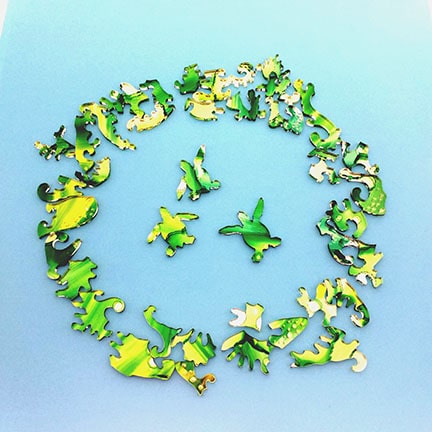
Shimmer Sunflower Puzzle:
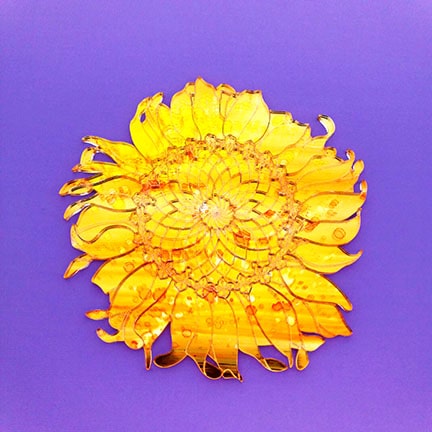

Shimmer Sugar Kitty Skull Puzzle:

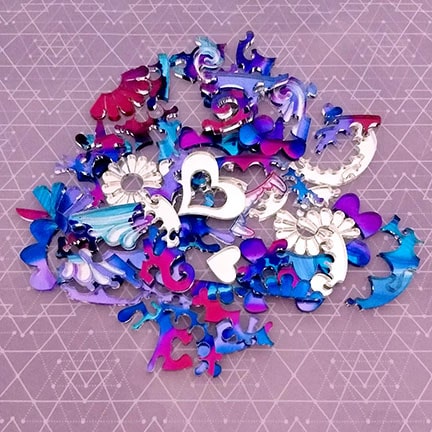
Shimmer Octopi Puzzle:
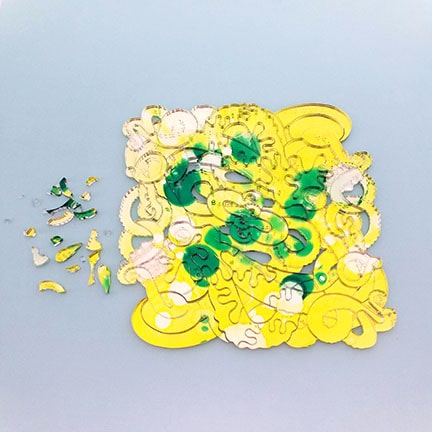
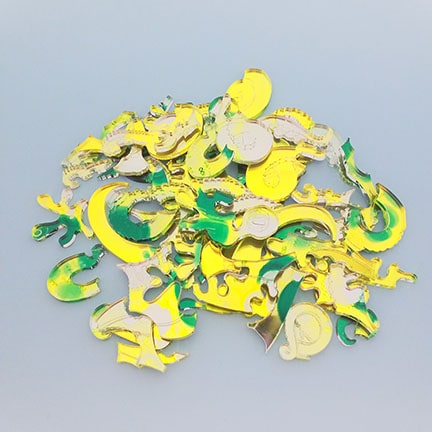
I had the opportunity to get them tested “in the wild” so to speak, at a spouse team-building picnic today:
In case anyone is interested, you can find them on my site at 3catmax.com 
Story time:
I was gifted a large amount of 1/8" mirror acrylic 6x6" squares (about 100 lbs worth) from Piedmont Plastics in Atlanta (which I wrote about here) and had been racking my brain to come up with something to do with allllll of it!
Wooden Puzzles:
I’ve been turning my skills to jigsaw puzzles and learning about the history of 1/4" wooden jigsaw puzzles cut with a scroll saw, and have done some custom hand-painted puzzles on my Glow-Zomb, and while I love the look of watercolor on wood, when the plywood doesn’t cut through because of a chunk of glue or whathaveyou, it is very disheartening to have to trash a hand painted piece.
On to Acrylic!
So yay acrylic, being an homogeneous material, cuts how I expect every single time, no messing with cutting through stubborn wood bits with an exacto!
Color!!!
But what about all that color you ask? An idea I got from @cynd11 mentioning that you could color  ply with copic markers, which are alcohol ink. That is how the adorable Desktop Sugar Monster Box is colored. Test shows that it sticks great to acrylic (as long as you don’t wash it with soap), but markers show a little too much “texture” from the felt nibs. Instead, I use bottled alcohol ink, commonly available through Ranger Adirondack or Tim Holtz inks or Jaquard Piñata. Also, let it dry at least overnight before cutting ;p
ply with copic markers, which are alcohol ink. That is how the adorable Desktop Sugar Monster Box is colored. Test shows that it sticks great to acrylic (as long as you don’t wash it with soap), but markers show a little too much “texture” from the felt nibs. Instead, I use bottled alcohol ink, commonly available through Ranger Adirondack or Tim Holtz inks or Jaquard Piñata. Also, let it dry at least overnight before cutting ;p
Where you are needed:
There is still some R&D needed with this techinque, as the colors can get cloudy on the acrylic and I’ve not figured out how to completely stop that. I have noticed that using 95% rubbing alcohol ink to dilute the intense colors tends to cause more fogginess compared to the Ranger Tim Holtz Alcohol Ink Blending Solution. If you try “dying” your own acrylic, I’d love to hear about your experience! Maybe together we can figure out the best way to use this technique!
One last pic, from 2019 DragonCon in Atlanta, #dragonconswagnseek where people hide things for the community to find and enjoy ;p 3x3" tiny dragon puzzles designed from the logo mascot:



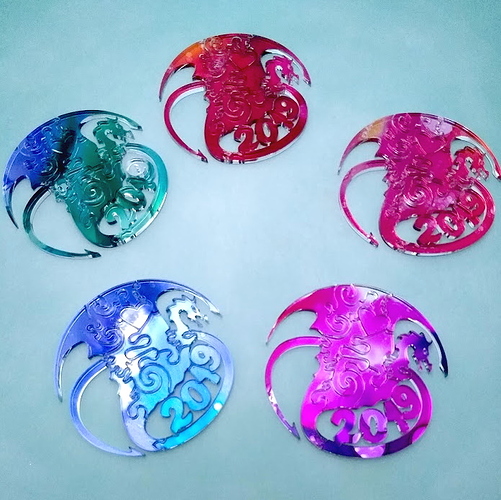

 so much shiny!!!
so much shiny!!!

